Intermediates
Gallantry and accessories
Blog Piekiełka
Black Opal from Ethiopia: A gem of dark power
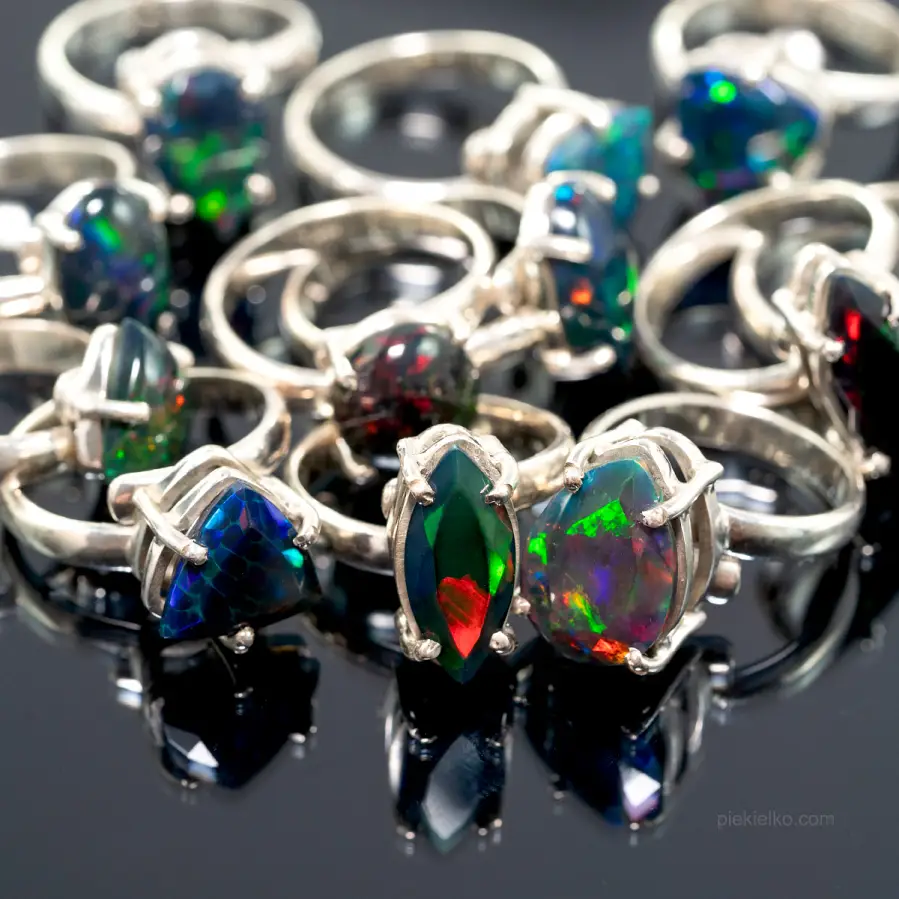
Among the wealth of gemstones, the black opal from Ethiopia stands out like a mysterious star in the night sky. Its dusky color, hiding rainbow reflections, mesmerizes and evokes associations with magic and the unknown. This is a stone not for everyone, but certainly for those who want something unique and powerful.
Black opal is a variety of precious opal, characterized by a dark, usually black background color, on which shimmering rainbow reflections are visible. These flashes are created when light passes through thin layers of silica in the stone, interfering and splitting into the visible color spectrum.
Chemically, black opal is hydrated amorphous silica (SiO2-nH2O). The water content of the stone can vary from 1 to 20%, which affects its hardness, brittleness and luster. Black opals have a hardness of 5.5 to 6.5 on the Mohs scale and are relatively brittle, so they require careful handling.
Opals are a group of precious minerals that belong to the silica family. They are distinguished by their characteristic iridescence effect, i.e. the shimmering of colors in the light. This effect is caused by the interference of light in microscopic layers of silica and water.
There are many different varieties of opals, each with its own unique characteristics. Among the most popular are:
- Precious opal: It is characterized by vivid opalescence and high hardness. It comes in a variety of colors, including white, black, blue, green and pink.
- Milky opal: It has a white or milky color and delicate opalescence. It is softer and more brittle than precious opal.
- Fire opal: It is characterized by a red or orange color and strong opalescence. It is rare and valuable.
- Dendritic opal: Contains inclusions of manganese or iron that form distinctive, tree-like patterns.
What makes opal valuable?
The value of opal depends on many factors, such as:
- Color: Opals with vivid and distinct opalescence are the most valued. Black opal is especially valuable because of its unique appearance and rarity.
- Transparency: Transparent or slightly transparent opals are the most valuable.
- Pattern of opalescence: The more regular and striking the pattern of opalescence, the higher the value of the stone.
- Cut: A well-cut opal can significantly increase its value.
- Origin: Opals from certain regions, such as Australia and Ethiopia, are more highly valued than others.
Why are opals black?
The black color of opals is caused by the presence of tiny inclusions of carbon, dust or other minerals in layers of silica. These inclusions absorb light, which gives the stone its dark color. In addition, black opal is often found in volcanic rocks, which are rich in dark-colored minerals. These minerals can also contribute to the stone's black color.
"Play-of-Color," or "color play," is an optical phenomenon characteristic of opals that involves the shimmering of colors on their surface. The effect is caused by the interference of light passing through microscopic layers of silica and water in the stone.
These layers have different thicknesses, causing light of different wavelengths to be scattered and reflected differently. The result is the observation of shimmering colors that can span the entire visible spectrum, from red to purple.
"Play-of-Colour" is one of the most characteristic features of opals and accounts for their unique beauty and value. The intensity and pattern of color shimmering can vary depending on the type of opal and its structure.
In addition to its aesthetic value, "Play-of-Colour" also has symbolic significance. In many cultures, opals are associated with magic, luck and intuition. It is said that their shimmering colors can reflect different aspects of the human soul.
Where can you find precious black opals?
The most famous black opals are mined in the Wollo province of Ethiopia. The volcanic rocks there hide these precious stones, which impress with their deep black color and shimmering reflections.
Other places where black opals can be found include:
- Australia
- Mexico
- United States
However, it should be noted that black opals are very rare and difficult to find.
Famous black opals
Black opals are some of the rarest and most expensive gemstones in the world. For this reason, many of them have become famous icons, known for their exceptional beauty and value. Here are some examples of famous black opals:
en.wikipedia.org
blackopaldirect.com
www.proflineshop.kz
Properties of black opal
Ethiopian black opals are not only beautiful, but also a treasure trove of valuable properties. They are believed to:
- They protect against negative energy: They are said to absorb bad vibrations and protect the aura from the influence of evil forces.
- Enhance intuition: Black opal is a visionary stone that can open the third eye chakra and deepen intuition.
- They add confidence: Wearing jewelry with black opal can strengthen inner strength and add confidence.
- They stimulate creativity: The dark color of the stone promotes contemplation and stimulates the imagination, helping to bring creative ideas to life.
- Attract wealth: Black opal is a stone of luck and abundance, which can attract a prosperous life.
Astrology and beliefs
Black opal is the zodiacal stone of Scorpio and Sagittarius. It is believed to favor those born under these signs, enhancing their positive qualities and offsetting the negative ones.
In many cultures, black opal is associated with magic and mystery. It is said to have the ability to connect with the spiritual world and open doors to other dimensions. In some traditions it is used for rituals and magical practices.
Culture and jewelry
Black opals from Ethiopia are prized around the world for their exceptional beauty and rarity. They are used to create exclusive jewelry that impresses with their unusual design and dark elegance. Earrings, rings, bracelets and necklaces with black opal are not only ornaments, but also talismans that can carry deep meaning for the wearer.
Are there synthetic black opals available on the market?
Synthetic black opals are available on the market. They are produced by the hydrothermal method, which involves the slow precipitation of silica from solution under conditions of elevated temperature and pressure. Synthetic black opals can be difficult to distinguish from natural ones, but they are usually less intensely black and have less pronounced opalescence.
There are several ways to distinguish synthetic black opal from natural opal:
- Price: Synthetic black opals are usually much cheaper than natural ones.
- Origin: Synthetic opals are produced in laboratories, while natural opals come from mines.
- Inclusions: Natural opals often contain inclusions of other minerals not found in synthetic opals.
- Opalescence: Synthetic opals can have a less intense and less pronounced opalescence than natural opals.
If you are unsure of the authenticity of a black opal, it is best to consult an experienced jeweler or appraiser.
Summary
Black opal from Ethiopia is a unique and precious gemstone that impresses with its dusky color, shimmering reflections and unique properties. It is a stone for people who want something unique and remarkable, and jewelry with black opal can become not only an ornament, but also a talisman with deep meaning.
Remember that black opal is a stone of strong energy, so before wearing jewelry with it, you should listen to your intuition and make sure that it is right for you.
Jewelry with opal
-
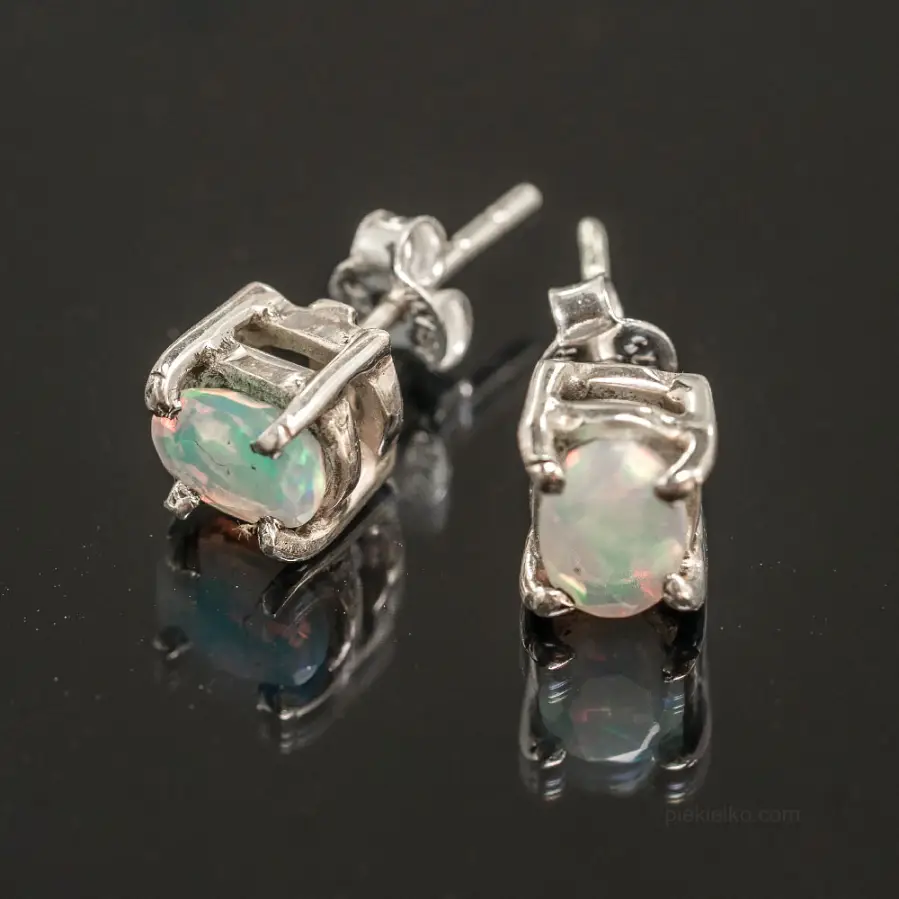
Silver stud earrings with white Ethiopian opal
200,00196,00 -

White opal from Ethiopia ring
510,00499,80 -
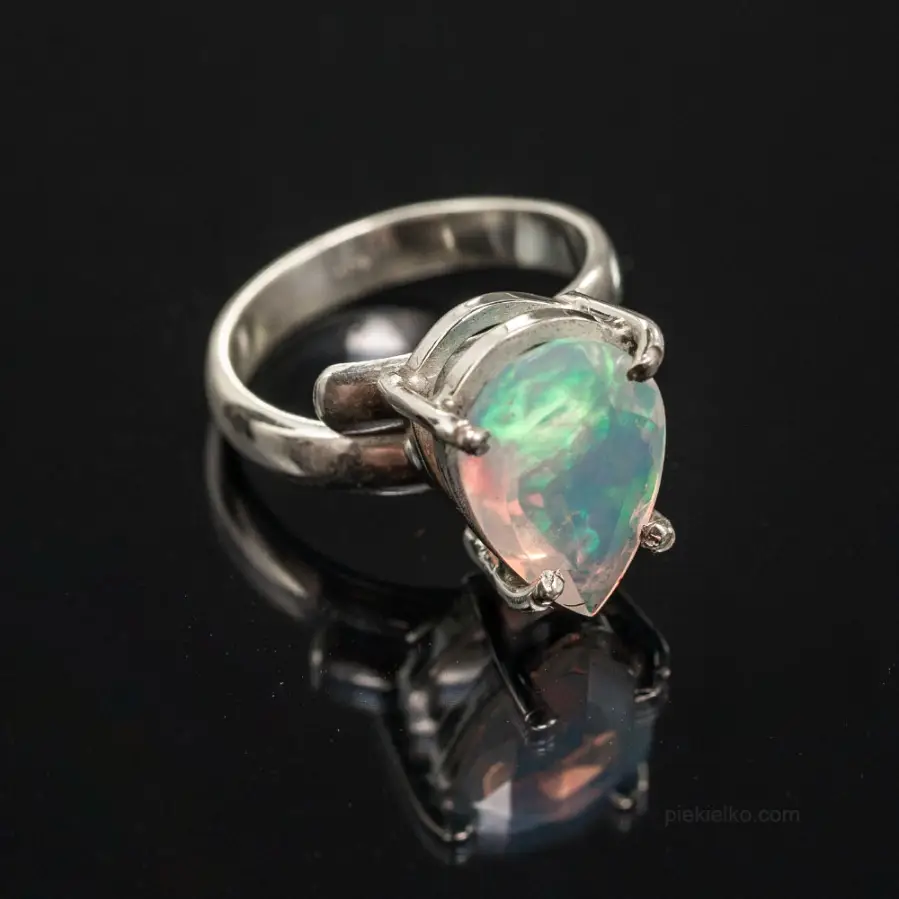
Ring with white opal
530,00519,40 -
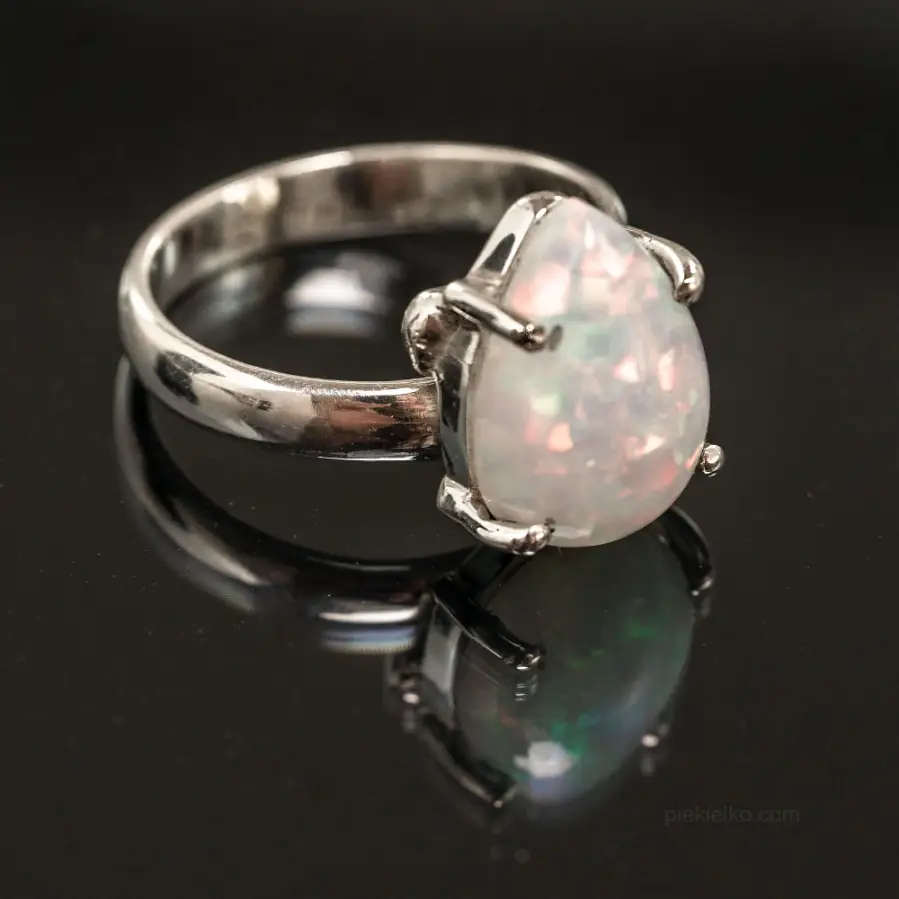
White opal, a natural gemstone
500,00490,00 -
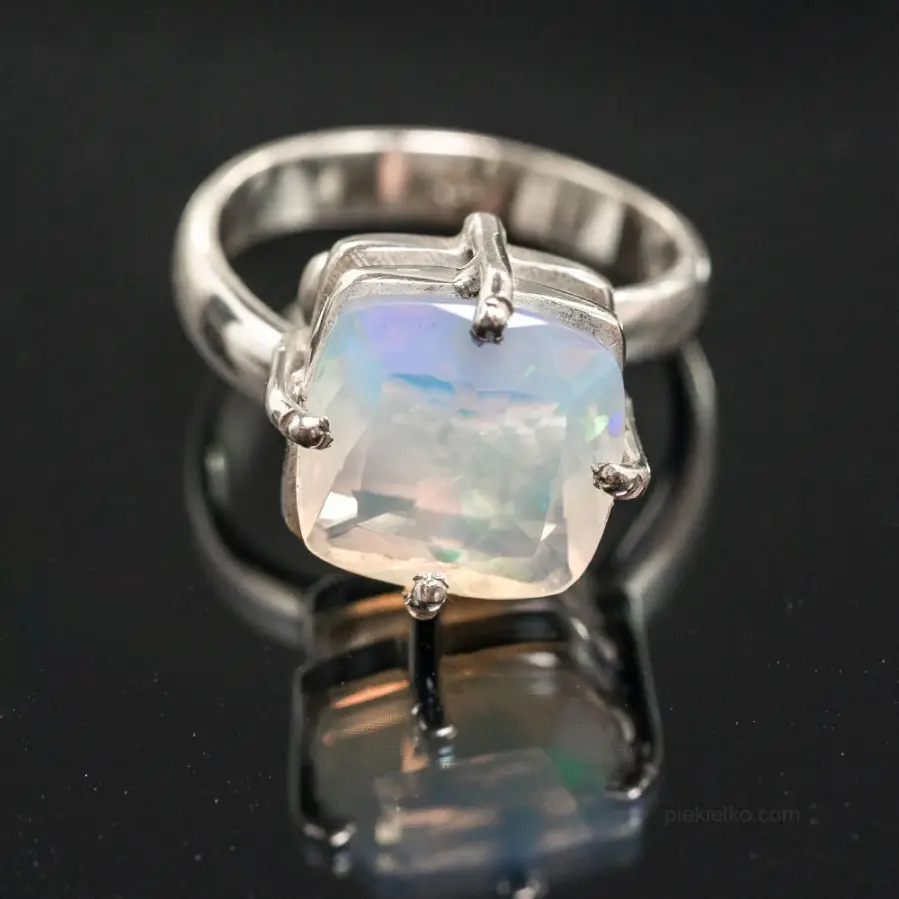
A flash of white opal from Ethiopia
550,00539,00 -

Ring with natural white opal from Ethiopia
540,00529,20 -
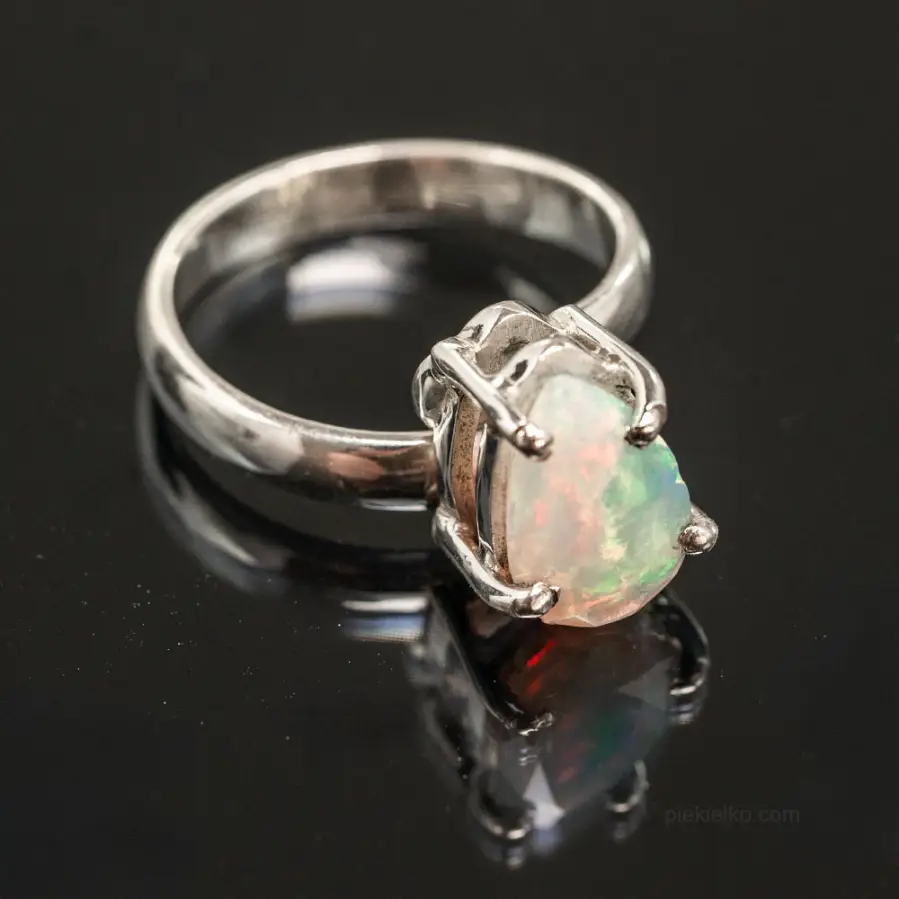
Small ring with natural opal
420,00411,60 -
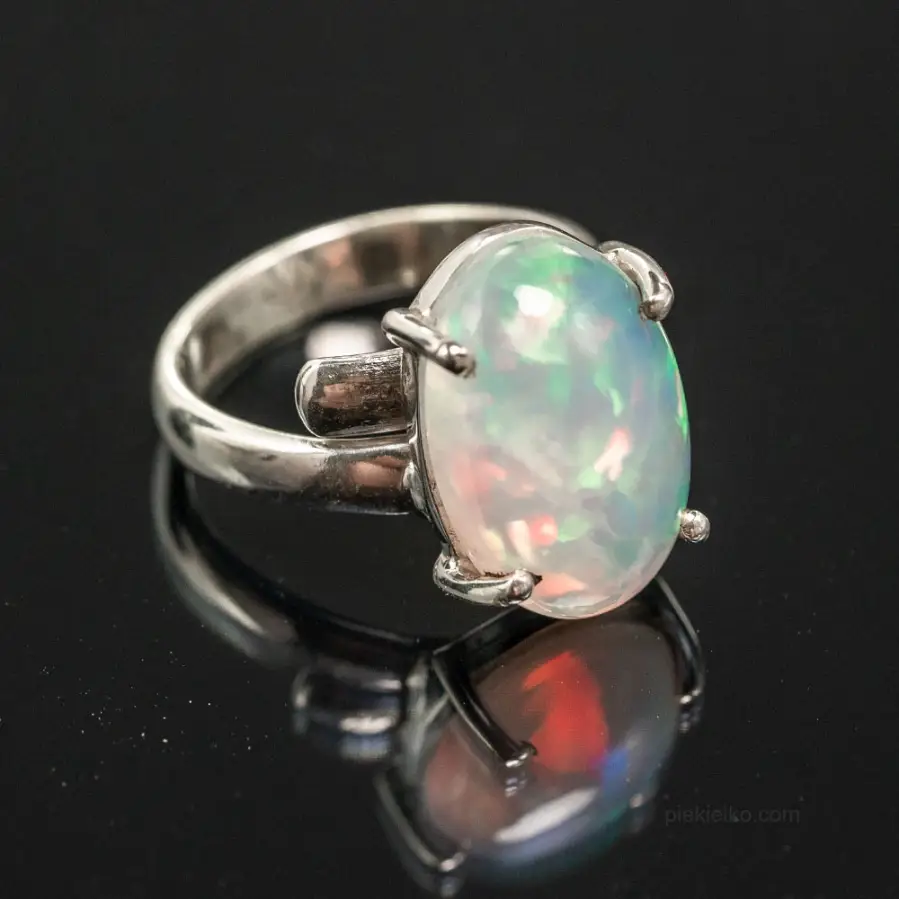
Ethiopian magic - opal ring
500,00490,00 -
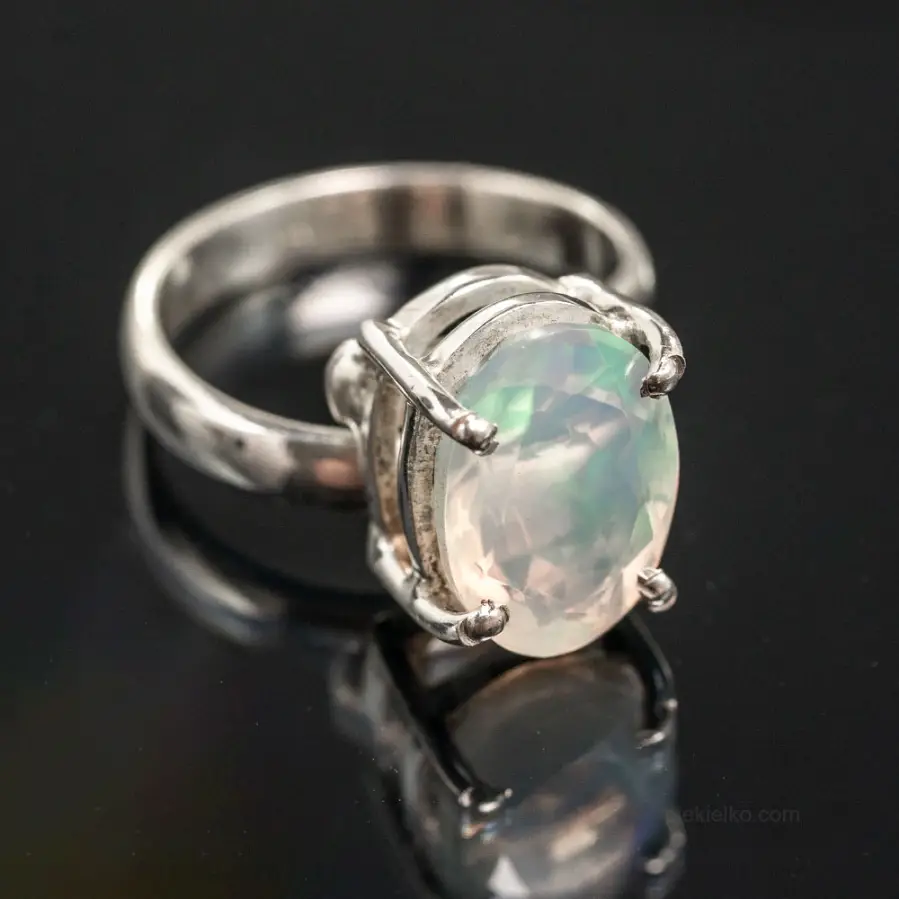
Opal magic - A ring that will enchant
530,00519,40 -
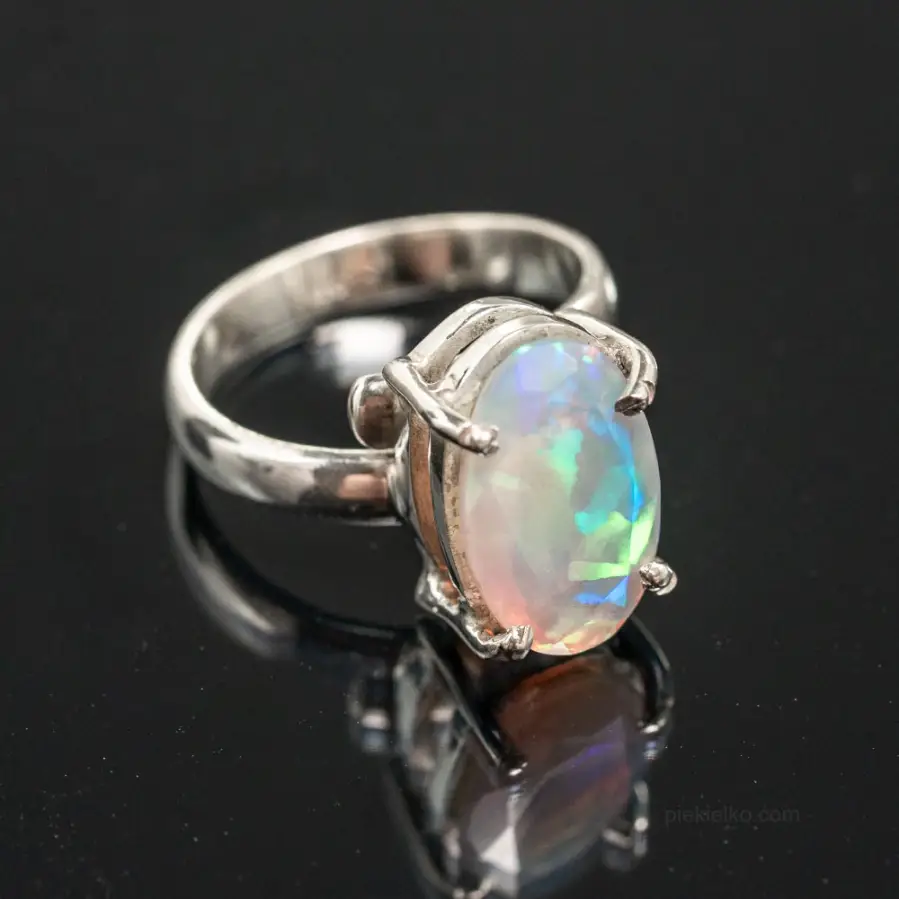
African Glow - Opal Ring
530,00519,40 -
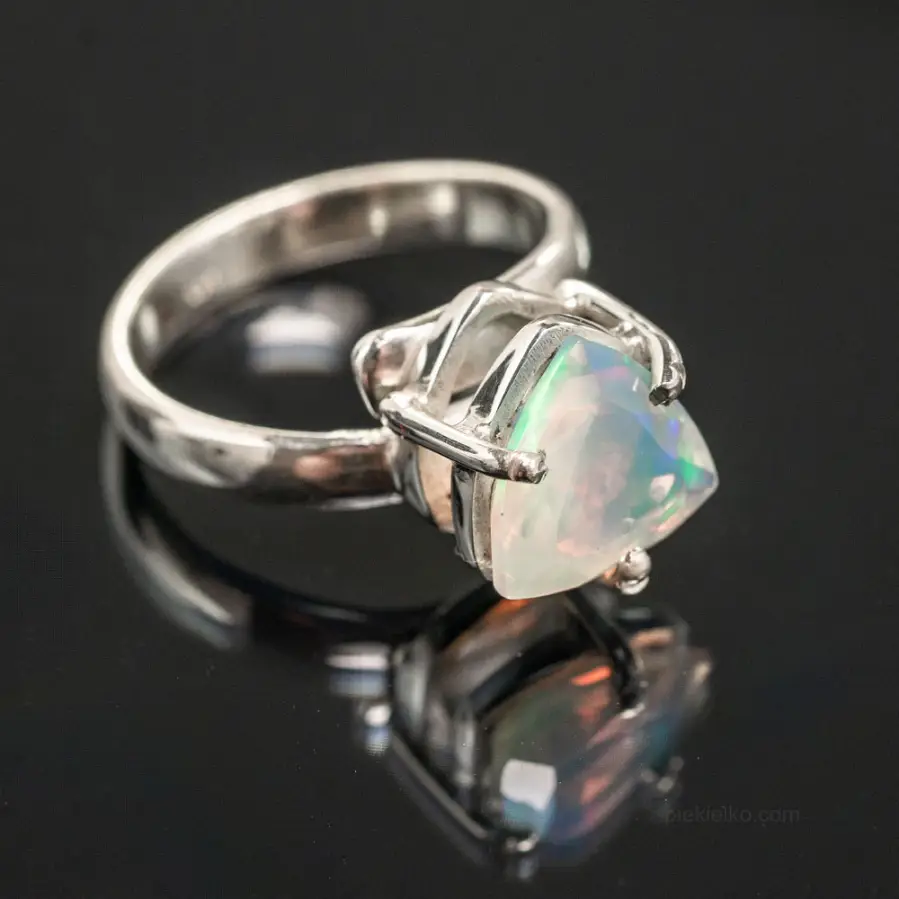
Magic of nature - Ring with white opal
500,00490,00 -
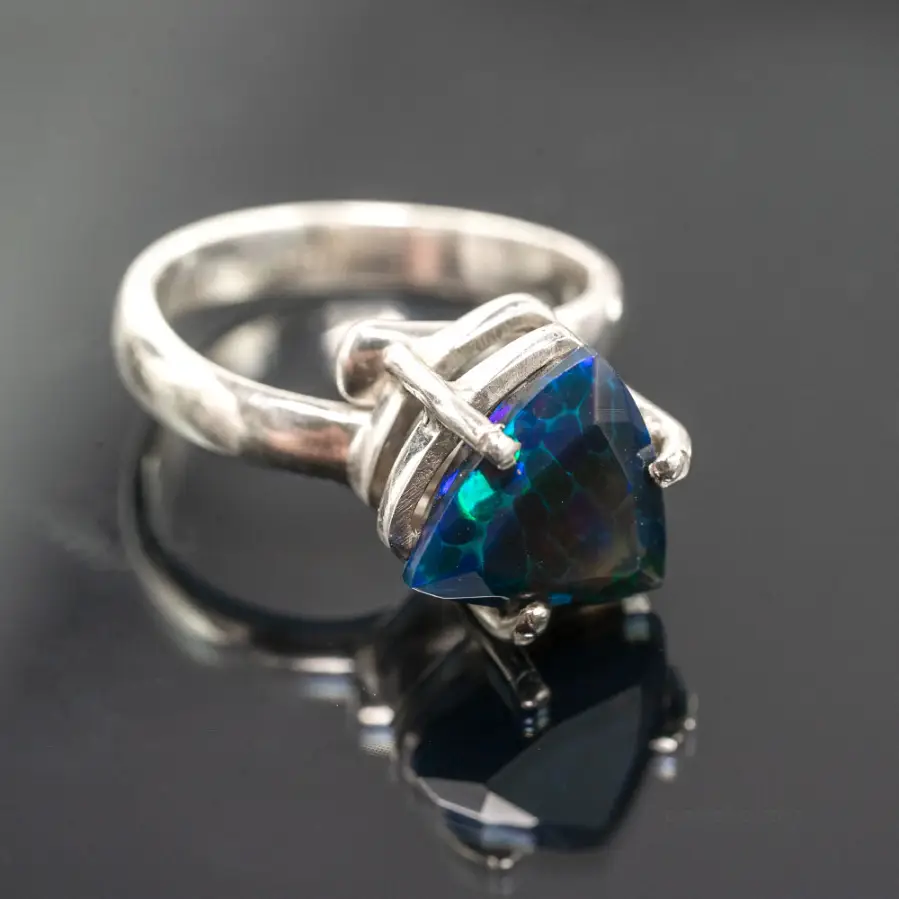
Silver ring with black opal
500,00490,00 -
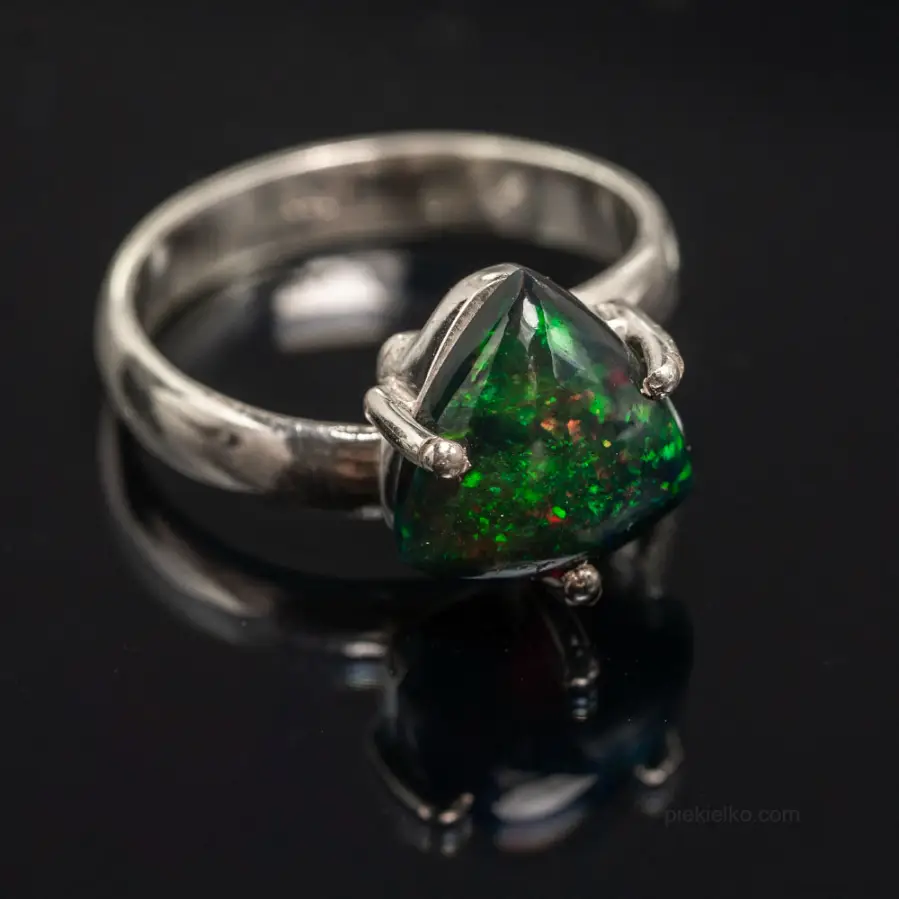
Ring with black opal
480,00470,40 -
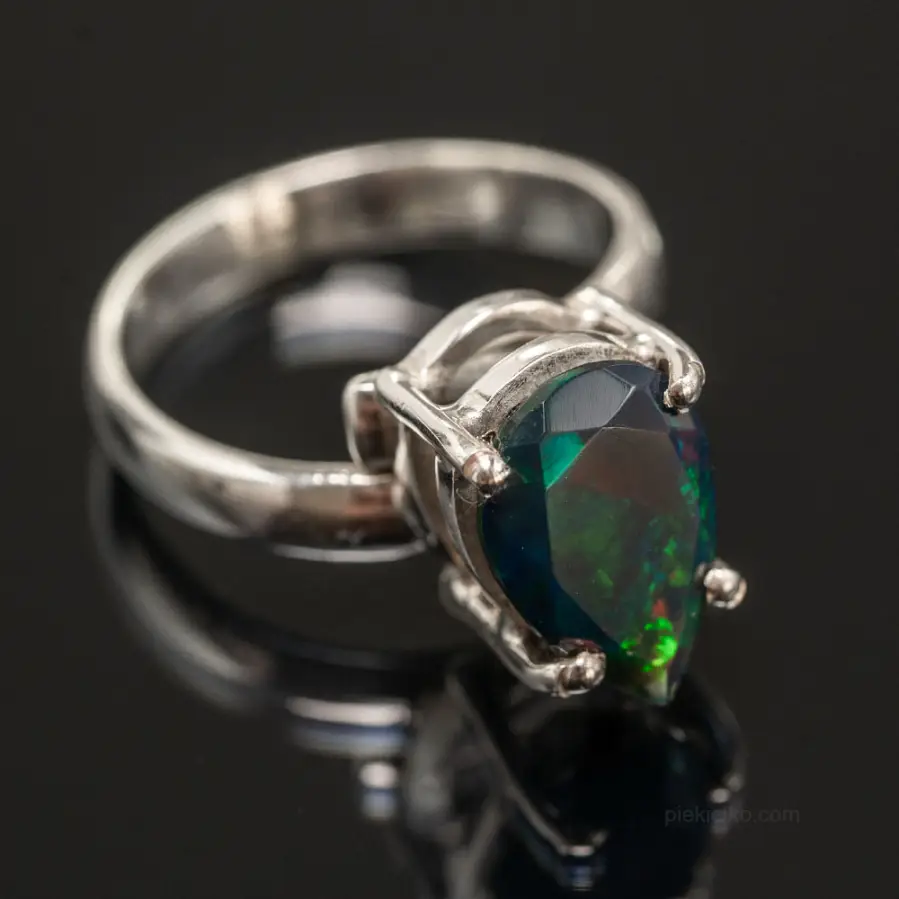
Ring with black opal
500,00490,00 -
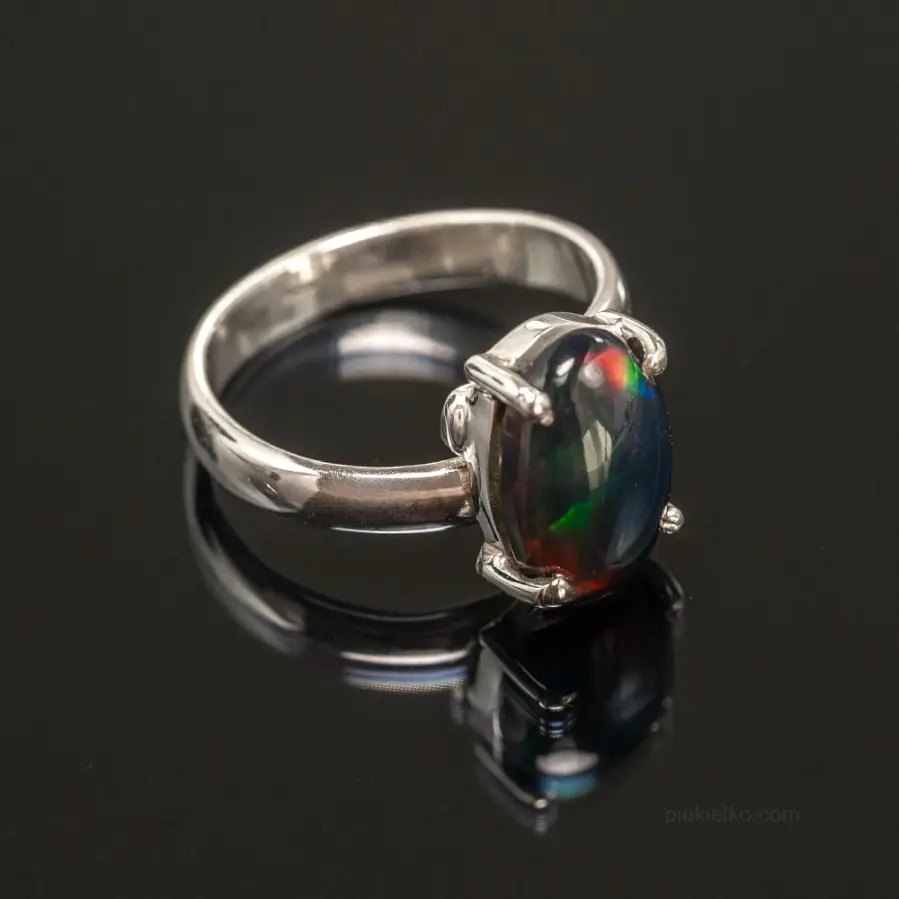
Ring with black opal
460,00450,80 -

Ring with black opal
490,00480,20 -
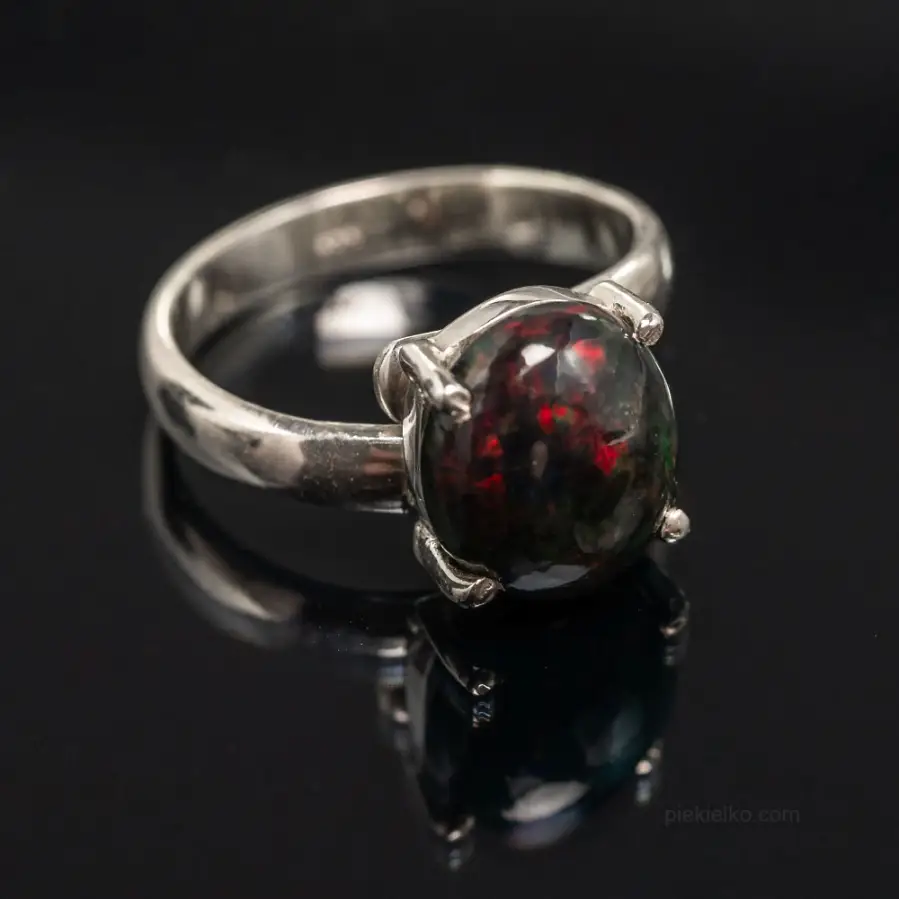
Ring with black opal
470,00460,60 -
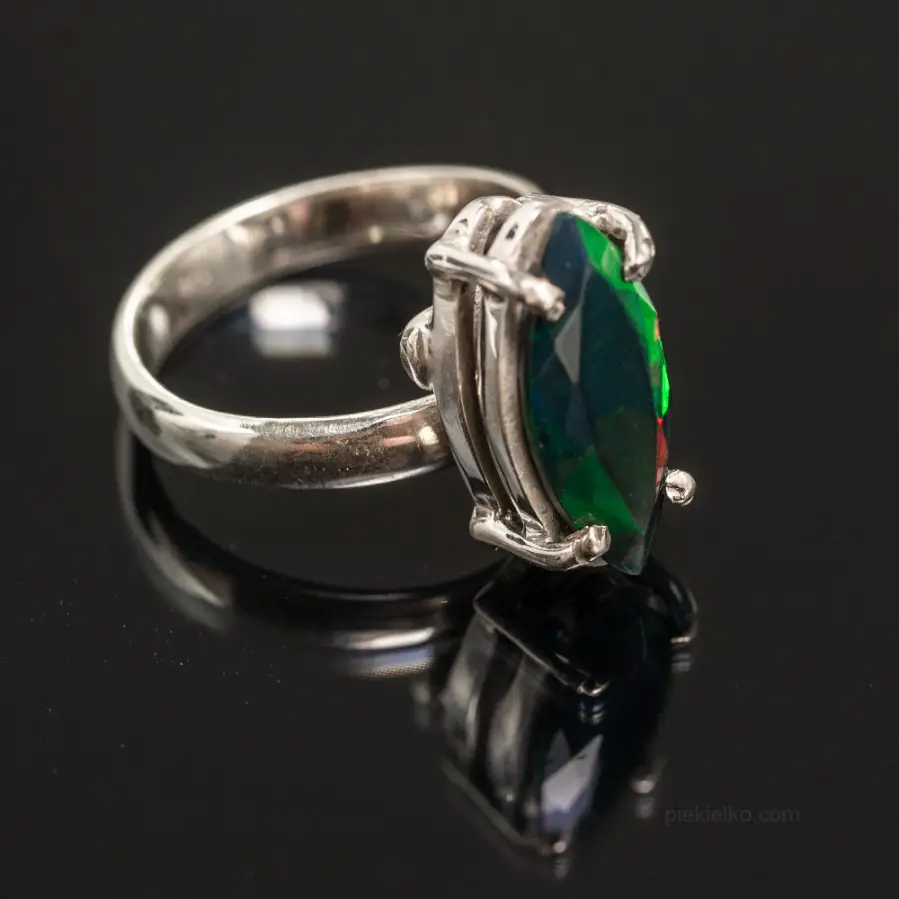
Ring with black opal
500,00490,00 -
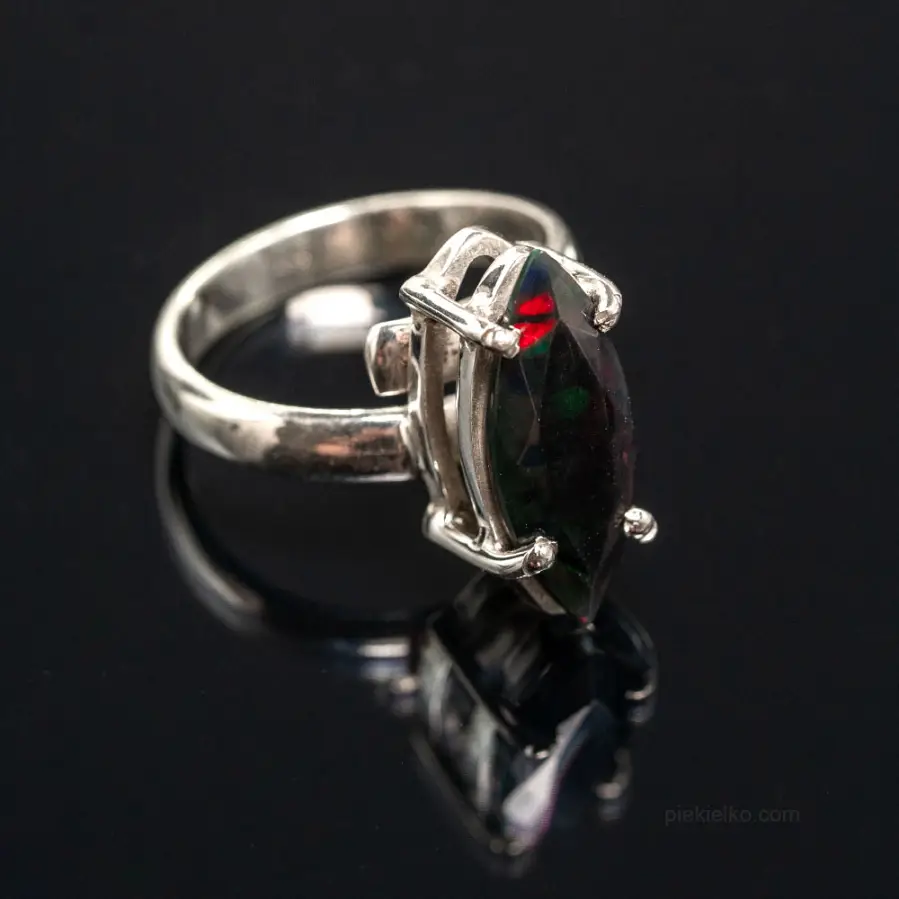
Ring with black opal
500,00490,00 -
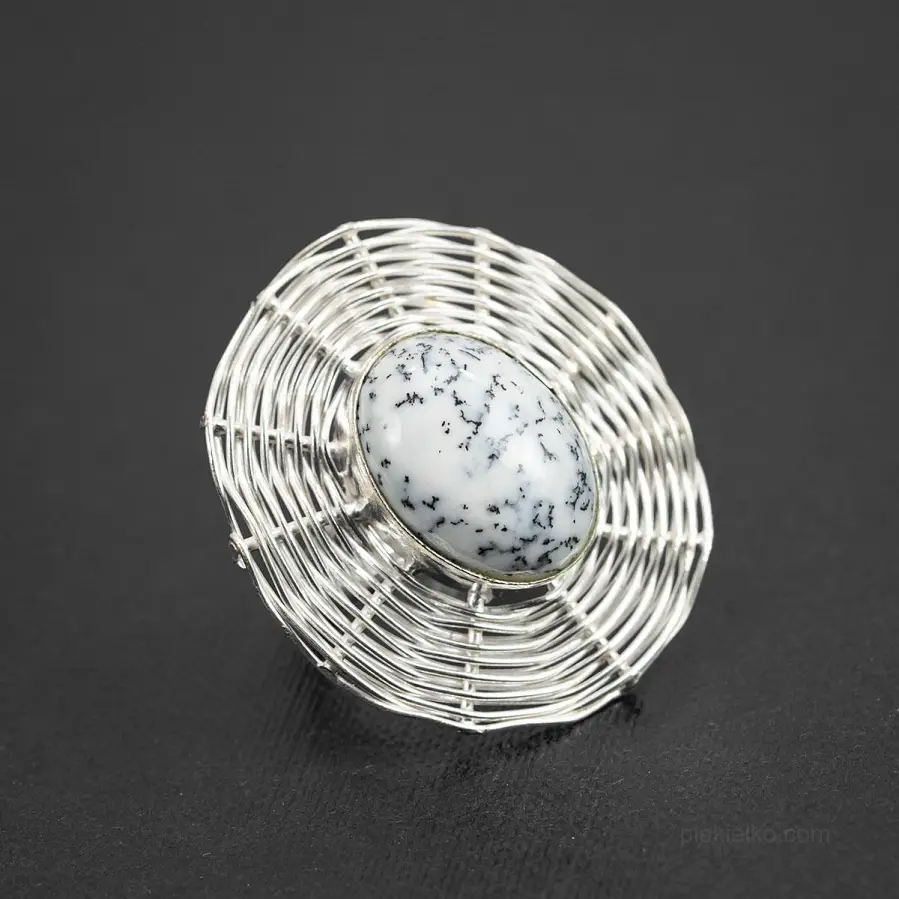
Opal dendritic basket ring
145,0085,26



© Piekielko.com

